Boosting Team Efficiency and Productivity Through Team Coaching: A Guide to Relationship Systems Coaching
Team efficiency and productivity are essential for business success. However, many teams struggle with issues such as miscommunication, conflict, and unclear roles, all of which can undermine performance. All of these issues also can also affect employee morale, which causes further complications. This is where team coaching—specifically Relationship Systems Coaching (ORSC)—can transform how teams function, helping them overcome these challenges and work together more effectively.
Let’s explore how team coaching boosts team efficiency, improves coordination, reduces conflicts, and enhances communication. We’ll also dive into the business value of investing in team coaching and cover practical strategies ORSC coaches use to drive productivity.
Common Challenges of Team Inefficiency
Teams, no matter their size or industry, often face similar challenges when it comes to efficiency. These include:
- Poor Communication: Without clear and open channels of communication, misunderstandings and information silos develop, leading to mistakes and delays.
- Unresolved Conflicts: Teams are made up of individuals with diverse personalities and working styles, which can sometimes result in friction or conflict. When conflicts aren’t addressed, they fester and impact team morale and output.
- Lack of Clarity: Teams that lack clear roles, responsibilities, and objectives often waste time on redundant tasks or misdirected efforts.
- Low Engagement: Without a sense of ownership or belonging, team members may feel disengaged, leading to lower motivation and productivity.
These challenges can significantly reduce the overall performance of the team. But by applying team coaching, particularly through the lens of Relationship Systems Coaching (ORSC), these issues can be addressed in a structured and impactful way.
How Relationship Systems Coaching Improves Team Efficiency
Relationship Systems Coaching (ORSC) is an advanced approach to team coaching that focuses on the relationships and dynamics within a team, treating the team as a living system rather than a group of individuals. This systems approach helps teams develop strong, functional relationships, which are key to high performance. Here’s how:
1. Improving Coordination and Alignment
One of the most critical aspects of team efficiency is alignment—everyone working towards the same goals with a clear understanding of their roles. ORSC uses tools like Designed Team Alliances (DTA) to help teams co-create agreements that define how they will collaborate, make decisions, and handle challenges. This ensures that everyone is on the same page, reducing friction and streamlining workflows.
- Practical Example: A team that uses a DTA at the start of a project experiences improved coordination because they have a clear structure for communication and decision-making. They collectively agree and commit to how they want to be together and how to handle conflicts early on, which minimises delays later in the project.
2. Reducing Conflicts and Building Trust
Conflict is inevitable in any team – it’s important that we normalise this! However, unresolved conflict which leads to high conflict, is detrimental to productivity. ORSC introduces the concept of the 3rd Entity, which shifts the team’s focus from individual perspectives to the collective voice of the team. By addressing issues from the perspective of what’s best for the “relationship system” (the team as a whole), team members are more likely to resolve conflicts productively and constructively.
- Practical Strategy: Use the 3rd Entity tool to explore the team’s shared goals and common interests. When conflicts arise, ORSC Coaches help the team view the problem from the perspective of the team’s overall health, encouraging collaboration rather than division.
3. Enhancing Communication
Effective communication is the backbone of any productive team. ORSC provides tools like MetaSkills and Relationship Systems Intelligence (RSI) to improve communication by fostering awareness of how team members interact. Teams learn to recognize unspoken dynamics, emotional cues, and patterns in their communication, which helps them communicate more openly and effectively.
- Example in Practice: During a coaching session, teams can use MetaSkills to identify communication breakdowns and underlying emotions. By addressing these dynamics, the team is able to improve their transparency, leading to faster decision-making and fewer misunderstandings.
The ROI of Investing in Team Coaching
Investing in team coaching is not just about improving team morale—it directly impacts the bottom line. Here’s how:
- Increased Productivity: Teams that communicate well and resolve conflicts quickly can focus on their work instead of being distracted by internal issues. This leads to faster project completion and better outcomes.
- Higher Employee Retention: Teams that function well together create a positive work environment, leading to increased job satisfaction. Employees who feel valued and understood are less likely to leave, reducing turnover costs.
- Better Decision-Making: Team coaching helps teams create processes for collaboration, which leads to better, more strategic decision-making. When team members are aligned and in sync, they can think more critically and creatively.
- Improved Innovation: A team that uses systems concepts is more willing to take risks, share ideas, and innovate. One of the ORSC core competencies is “Everyone is right, only partially” allowing teams to consider and accept all perspectives collectively. This is crucial for staying competitive in today’s marketplace.
According to research from the International Coach Federation (ICF), companies that invest in coaching see a return on investment (ROI) of 7x the initial cost, primarily due to increased efficiency and reduced conflict.
Practical Strategies to Drive Productivity Through Team Coaching
So, how can coaches apply team coaching to drive productivity in practical terms? Here are some key strategies:
- Hearing All Voices of the Team: Teams work best when they feel safe to express themselves without fear of judgement or retaliation. Coaches can help build a sense of safety using ORSC’s Deep Democracy tool, which ensures that every voice is heard and respected.
- Regularly Assess Team Health: Using tools like RSI Metrics, team coaches can regularly assess the health of the team. By identifying areas where relationships are strained or communication has broken down, the coach can intervene early to prevent bigger issues from arising.
- Focus on Continuous Learning: Encourage teams to see themselves as a learning community. A learning mindset fosters curiosity, adaptability, and resilience, all of which are key for long-term productivity. ORSC helps teams adopt this mindset through reflective exercises and ongoing feedback loops.
- Set Clear Goals and Accountability: Coaches should help teams set measurable goals and ensure accountability through regular check-in rituals. This keeps the team focused and ensures that productivity remains a top priority.
Team coaching, particularly through the Relationship Systems Coaching (ORSC) methodology, offers a powerful approach to boosting team efficiency and productivity. By improving communication, reducing conflict, and fostering better alignment, ORSC team coaching transforms teams into high-performing units that deliver results.
Investing in team coaching is not just a short-term fix—it’s a long-term strategy that enhances both individual satisfaction and business performance. For companies looking to stay competitive, embracing team coaching is an investment in their most important asset: their people.






